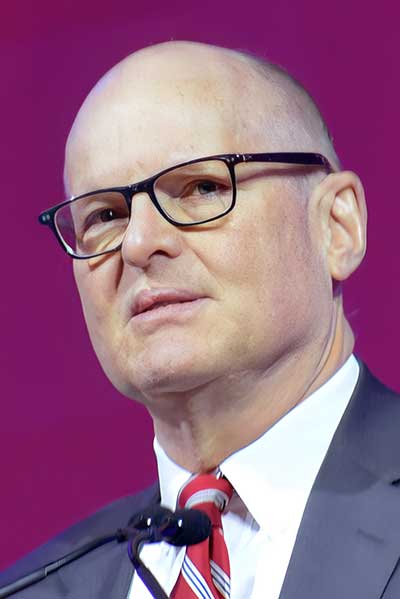Osteoporosis is the most common metabolic bone disease in adults. It is characterized by low bone mass and micro-architectural deterioration of bone tissue that leads to an increase in bone fragility and susceptibility to fracture. The quest for a consensus on optimal fracture risk prediction and bone strength measurement tools continues, but practicing clinicians and researchers have an array of options to test for these metrics.

Presenting this year’s Gluck Memorial Lecture: The Quest for Fracture Risk Prediction & Bone Strength Measurement, Bobo Tanner, MD, Assistant Professor of Medicine at the University of Vanderbilt, summarized current tools for assessing bone health and fracture risk while looking toward newer methods with the potential for further discovery.
The session is available on demand for registered ACR Convergence 2023 participants through Oct. 31, 2024, on the meeting website.
Bone quality refers to a composite of features that help the bone resist fractures. These features include bone density, accumulated microscopic damage, bone turnover, and the quality of collagen or mineral crystal size. No current technology can comprehensively measure these features, so clinicians must be attuned to the various tools available to gauge each individually, depending on the concerns related to a patient or research objectives, Dr. Tanner said.
He explained that dual-energy X-ray absorptiometry (DXA) became the gold standard for measuring bone density in 1987 and is still regarded as such. Using DXA reveals a patient’s T-score. A patient is considered osteoporotic if their T-score is -2.5 or below.
“When the World Health Organization (WHO) recognized its importance, it made the statement that this tool, DXA, is better at predicting fractures than cholesterol is at predicting myocardial infarctions or hypertension for stroke,” Dr. Tanner said.
While this is the method most often used to test for bone health, Dr. Tanner cautioned that DXA measurements are operator-dependent and the tool is not always used correctly. Technicians must be well-trained to measure DXA reliably. DXA can also be hindered when used on a patient with a body mass index (BMI) greater than 30. Analyzing DXA readings can also be particularly challenging.
“An Italian study published in 2015 looked at reports from DXA and found 90% of them contained errors, mostly of data analysis,” Dr. Tanner said.
Another issue with DXA is cost. According to Dr. Tanner, 80% of Medicare patients who have had a fracture do not receive a DXA scan. He attributed this to the Choose Wisely campaign from several years ago that discouraged clinicians from ordering DXA scans and to Medicare reducing the reimbursement for these scans to $67.
An innovative and more cost-effective option proposed by Dr. Tanner is a retroactive analysis of CT scans. More than 50 million chest or abdominal CT scans are performed yearly in the United States.
“You can do this at home right now. It’s pretty easy,” he said. “You take a CT scan of an abdomen, pelvis, lower spine, and look at the vertebral body of L1, and you can draw an ROI. A little device in the package drops down, and it will make a little ovoid for you and immediately pop up something called Hounsfield units (HU).”
HU serves as a surrogate for bone density. An HU measurement of less than 100 signals a patient has low bone density and carries a high risk for repeated fracture. Dr. Tanner shared that while HU does not have the same consensus as T-scores, CT scans avoid common challenges of DXA related to a patient’s body size or calcium locations.
A more recent tool, the OsteoProbe, is a handheld device with a needle that’s depressed onto the midshaft of a patient’s tibia with the force of 10 newtons (N), which activates a 30 N impulse that goes into the bone. This impact micro-indentation process is repeated eight times. The needle is subsequently placed into methyl methacrylate and yields a bone material strength index (BMSI) measurement. BMSI appears to identify the bone’s cortical material composition, mineral-to-matrix ratio, and water content or advanced glycation rather than micro-architecture or porosity.
While the U.S. Food and Drug Administration (FDA) approved the OsteoProbe to test tissue resistance to micro-indentation, the organization said it was not intended for diagnosis or treatment. Dr. Tanner said the company behind the tool recently completed a study that will be submitted to the FDA at the beginning of next year to demonstrate the technique effectively measures bone strength.
While the emerging technologies in this space hold promise, Dr. Tanner asserted there’s still much work to be done.
“The quest is still a continuation,” he said. “We still need tools to interrogate the mechanical property of bone.”
WATCH ACR CONVERGENCE 2023 SESSIONS ON DEMAND
If you weren’t able to attend a session in person during ACR Convergence 2023, you haven’t missed out. All registered meeting participants receive on-demand access to scientific sessions through October 31, 2024.


